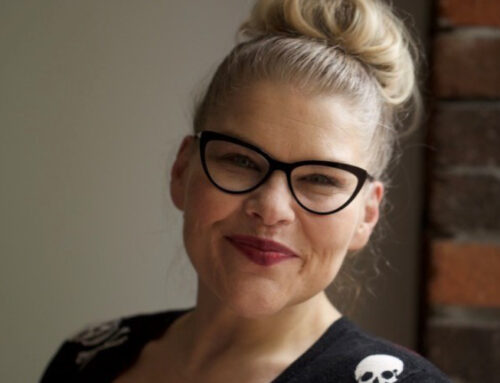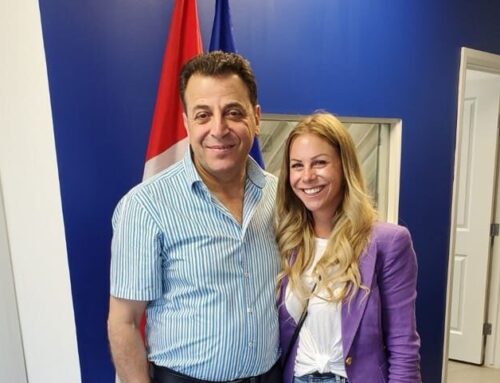Today’s post comes from Maxine Myre. Maxine is a PhD candidate in the Faculty of Kinesiology, Sport, and Recreation at the University of Alberta and the Obesity Canada social media coordinator. Her PhD research examines the relationship between weight stigma and physical activity among women living with obesity with the goals of reducing the impact of weight stigma and improving body weight inclusion in physical activity.
It is rare to see positive images of individuals with obesity in physical activity-related media. The mostly negative portrayals can increase the internalization of weight bias, which is associated with stress, anxiety, and reduced motivation for physical activity.
In a study published recently in the academic journal Applied Psychology: Health and Well-Being, we wanted to know if pairing positive and counter-stereotypical images of individuals with obesity with words like “motivated”, “fit”, and “strong” could reduce weight bias internalization. The images used in the study included some from Obesity Canada’s free image bank.
Over three weeks, participants in the experimental group completed a computer task that repeatedly showed the counter-stereotypical images with positive physical activity-related words. We wanted to see if seeing the images paired with positive words would increase positive associations with individuals with obesity being active, which might reduce weight bias internalization. Participants in the control group read Canada’s Physical Activity Guidelines and set a physical activity goal for each week.
We found that weight bias internalization was not different between the two groups. There were also no differences in participants’ confidence or attitudes about physical activity, or how much physical activity they reported doing. Our results showed that it is difficult to change internalized weight bias when it comes to obesity in our society. Participants may have been exposed to stereotypical images outside of the study that counteracted any effect of the experiment.
In follow-up interviews with sixteen women who participated in the study, we asked what they thought about positive images of active individuals with obesity and what they believed would be the broader impact of using Obesity Canada’s images in physical activity promotion. Here is what we found:
Positive comments
- Images may challenge weight/health/fitness stereotypes
- Images may normalize body size diversity and reduce negative weight-related attitudes
- Images may encourage physical activity and improve self-perceptions
- Images may help identify safe spaces
“I think that people would see themselves in those images and hopefully see that they can participate, or that there are options out there for them” – participant quote
Negative comments
- Images may not affect stable and engrained weight-related beliefs
- Images may cause a backlash and promote shame and blame
- Images are unlikely to be used by organization
“What did I have someone say to me once? That fat people just disgust them and no matter what they’re always going to disgust them. So sometimes I think it’s really hard to change their beliefs and opinions” – participant quote
So, although our experimental study did not reduce weight bias internalization, the interview findings supported the use of counter-stereotypical physical activity images. In particular, the women we interviewed recommended that:
- Images reflecting all body sizes should be used in physical activity media
- Images should be paired with messages that focus on health and enjoyment instead of weight loss
- Physical activity spaces that are inclusive of all body sizes are needed
What’s next? We’re following up with another study to test how these images are perceived by people in the general public to see if some of the comments from our interview participants are supported. In collaboration with Obesity Canada, we will continue working to change negative perceptions of individuals with obesity in physical activity.
Thank you to everyone who participated in this study and to co-authors Dr. Tanya Berry, Dr. Geoff Ball, and Brad Hussey. If you have any comments or questions, please email Maxine at myre@ualberta.ca.






